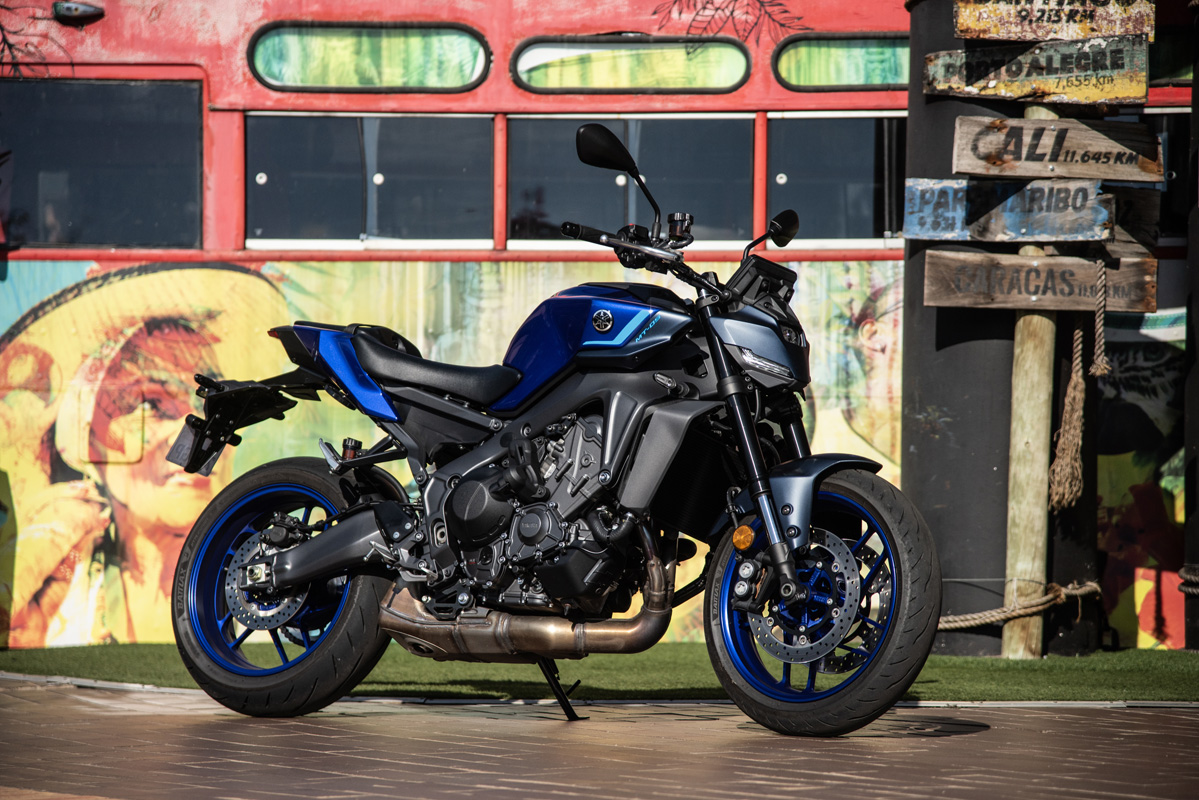
I must say I was intrigued to ride Yamaha’s ‘automatic’ MT-09. My daily hack is a Honda NC750 DCT, so I was keen to see what Yamaha’s take on self-shifting motorcycles is. I was also intrigued by the choice of platform with which they chose to introduce this technology. The MT-09 has, over the years, garnered a reputation as a hooligan tool of note. Naked bikes are purist, dyed-in-the-wool sort of machines, which require quite a bit of compromise to live with. Styling is still the familiar ’Transformer’ look that we are familiar with.
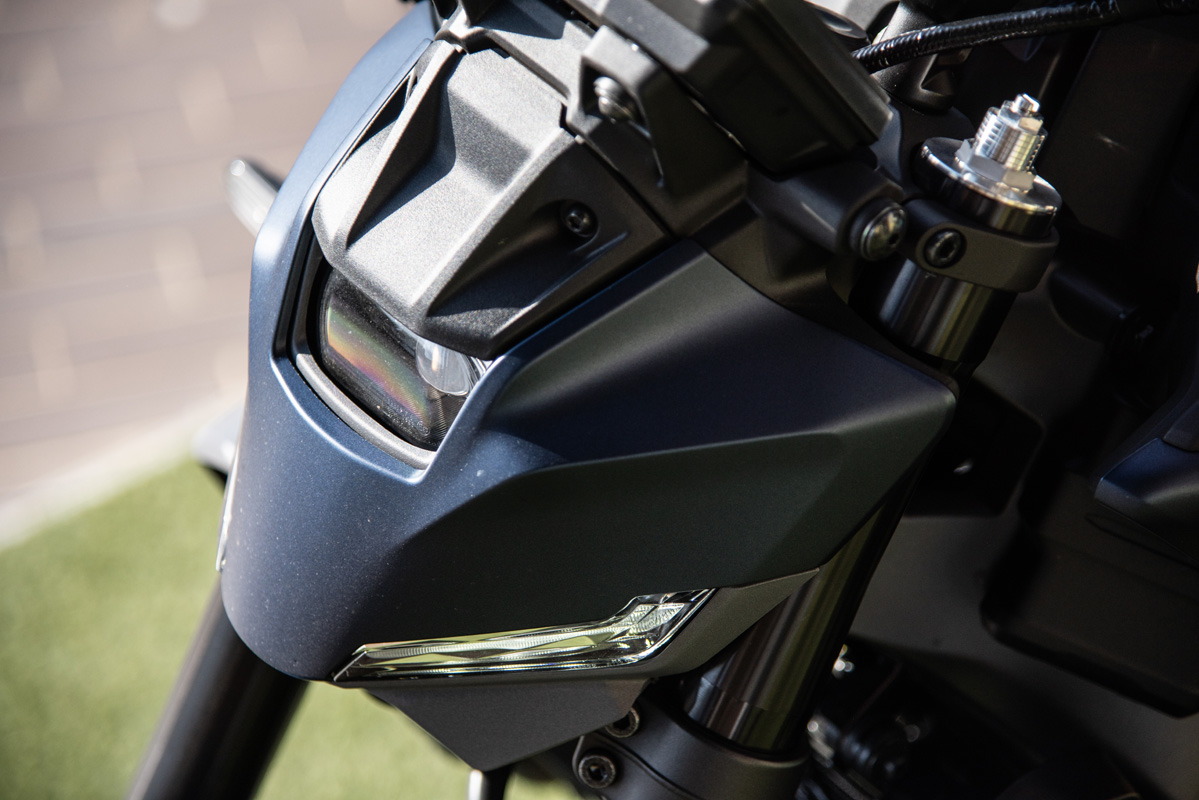
My test bike was in the wonderful Yamaha ‘bLU cRU blue’ and looked the business. The riding position allows for some ergonomic fine-tuning, but is spot on for me as is. The Auto MT is keyless, so you need the fob to be on you for it to react to the ignition switch. Why do you take something that isn’t broken and try to fix it? If you switch the MT off when it is in gear, you cannot move the bike without starting it, selecting neutral, which lives below first gear, and then switching the bike off. Irritating! An auto MT? OK then, let the games begin!
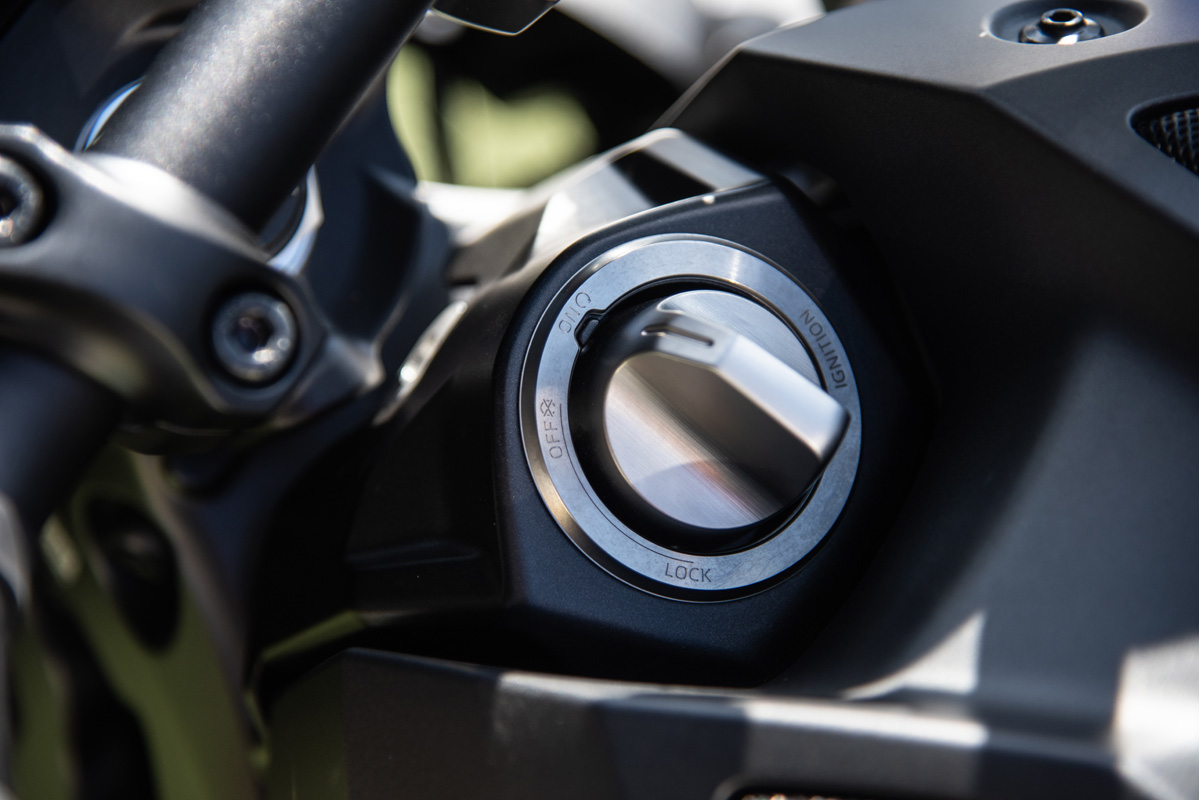
I have always been a fan of Yamaha’s DOHC 4-Valve CP3 Triple. In its latest 890cc form, it is, in my opinion, one of the greatest motors ever slotted between two wheels. Powerful, gruff and torquey, it feels much more powerful than its 119 hp would suggest. Whilst maximum power happens at 10,000 rpm, the torque curve is a thing of beauty, peaking with 93 Nm @ 7000 rpm, it makes usable torque from out of the basement, with over 50 Nm available from as low as 2,500 rpm. Good power characteristics to cobble onto an auto box.
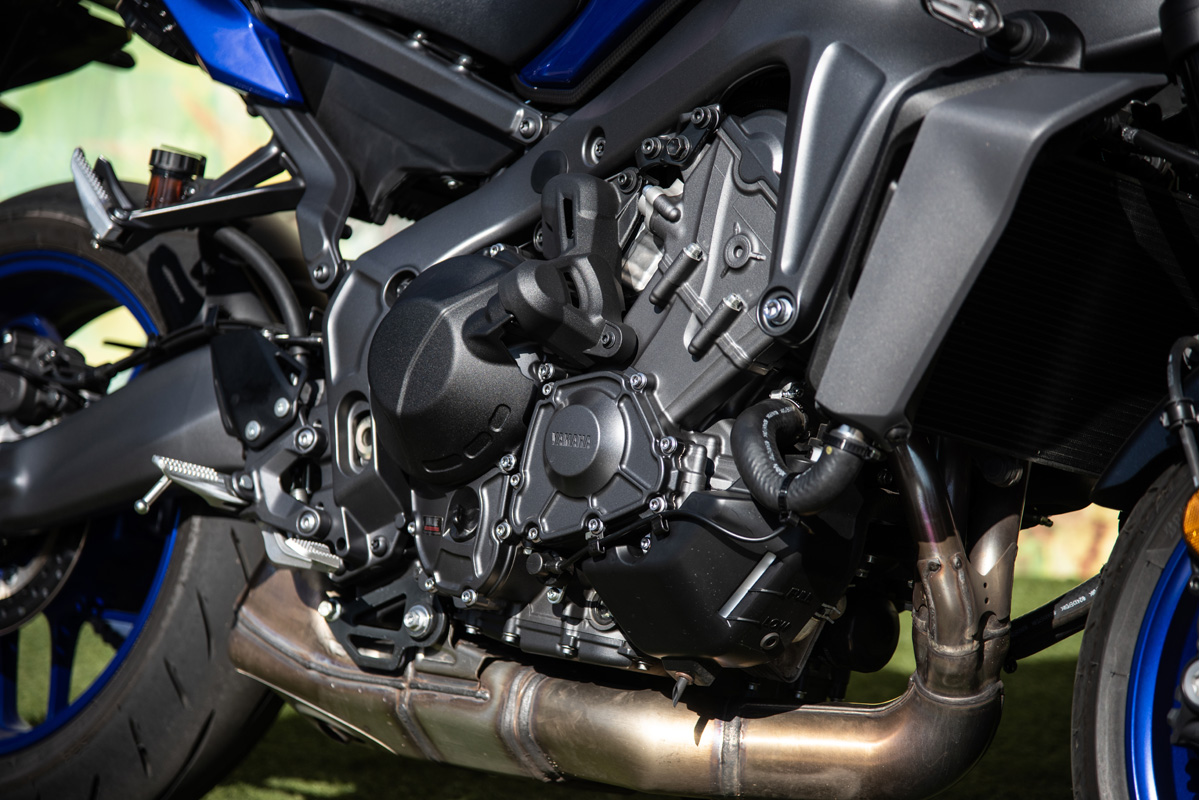
So, how does this auto box work? Honda uses double-clutch technology, similar to Porsche’s PDK setup, which essentially has two gearboxes and shifts by jumping from one gearbox to the other, where the next gear is already engaged. This results in instant shifts with absolutely no hesitation. Yamaha has gone a different route. The engine has two electric motors called ‘actuators’ which operate the clutch and gearshift on your behalf. In ‘Auto’, selected by pulling a trigger on the right-hand handlebar cube, you engage first by pulling the paddle shift on the left handlebar. Once first is selected, you simply open the throttle and off you go. A ‘D’ is displayed on the dash, or you can select a more aggressive and sportier ‘D+’ via the right cube-mounted mode button.
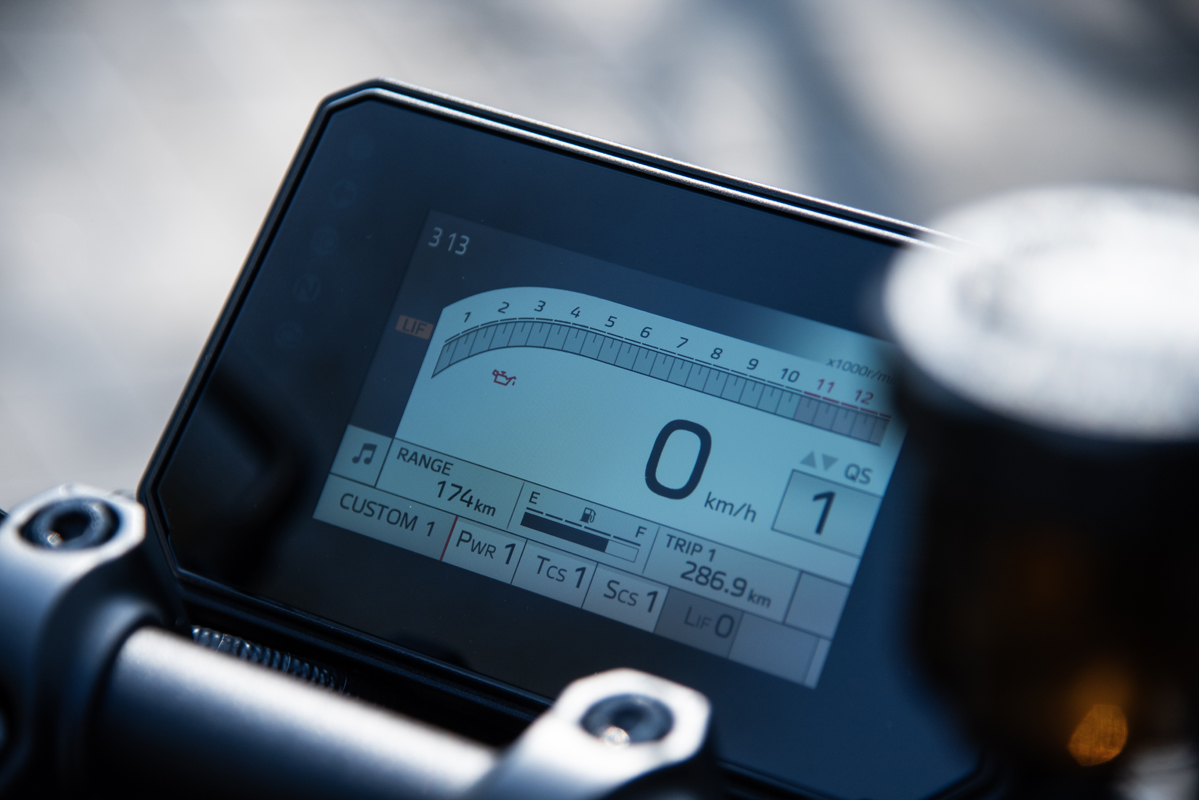
You now have full auto, and it’s a simple twist and go, with the bike shifting up and down on your behalf. To be frank, I found the shifts to be a bit at odds with the way we typically ride. Shifting up mid-corner or suddenly dropping a gear when negotiating a traffic circle can be a trifle disconcerting. It is not as intuitive as Honda’s DCT. Shifts are also not as smooth, with a mild mechanical clunk felt through the bike. Full power through the gears results in a millisecond drop off of power at each shift, less noticeable when riding sedately. You can intervene with the paddle shifter if needed by either changing up or down as the situation demands. But there is more.
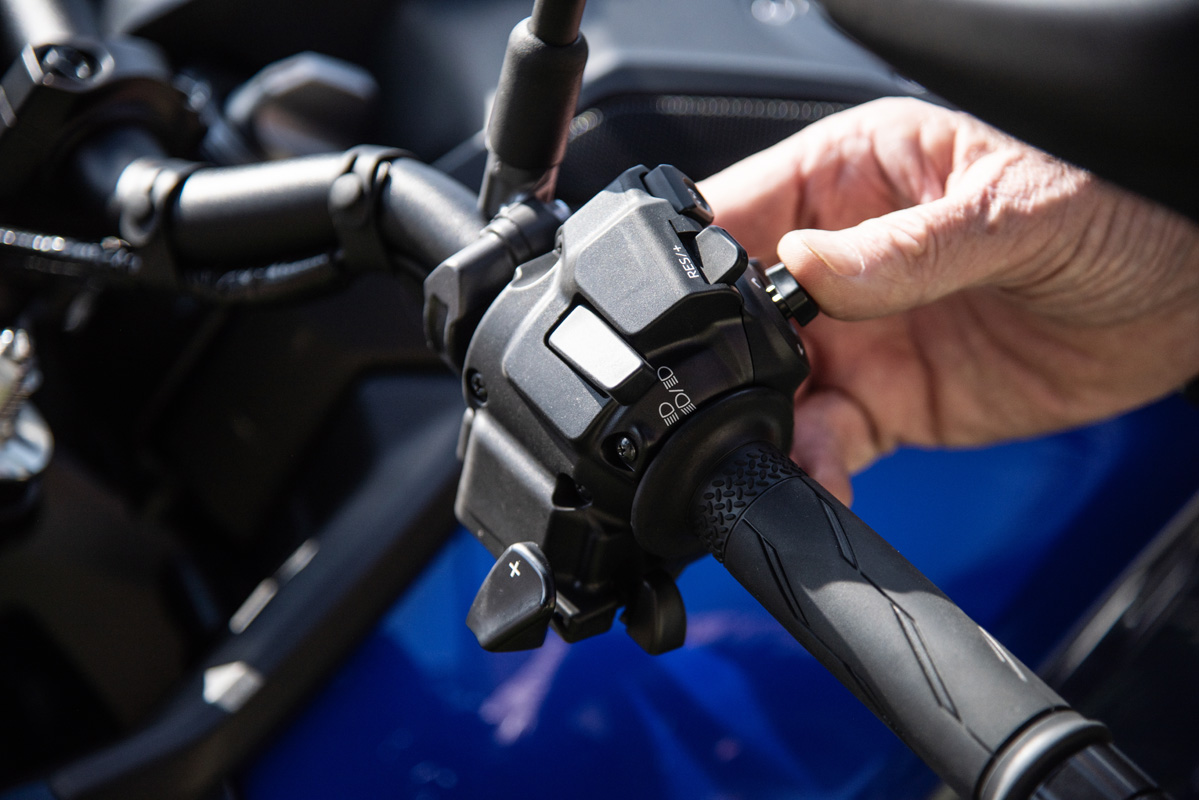
Selecting ‘MT’ brings a different dynamic, which, to my mind, suits the character of the MT way better. Here you have Sport, Street, Rain and custom modes, which allow you to select your power delivery of choice. In MT, you need to use the plus and minus levers to change up and down as you please; however, the bike will change down when you come to a stop. Upshifts require you to select the next gear; failing which it will bounce off the rev limiter until you intervene by hooking the next gear. Interestingly, shifts are seamless, identical to using a good quickshifter, with no mechanical feedback or hesitation as experienced in ‘auto’. This is how I would set up my Auto MT. Blast away from standstill, blip through the gears by flicking your left forefinger and then, when you climb on the brakes for a corner, drop gears for the required engine braking with your thumb. Hold the gear you want when you want it, and shift at your pleasure. Rolling to a stop, you let the bike select first before you take off again. In this way, the ride is sporty and engaging, playing on the strengths of that incredible motor.
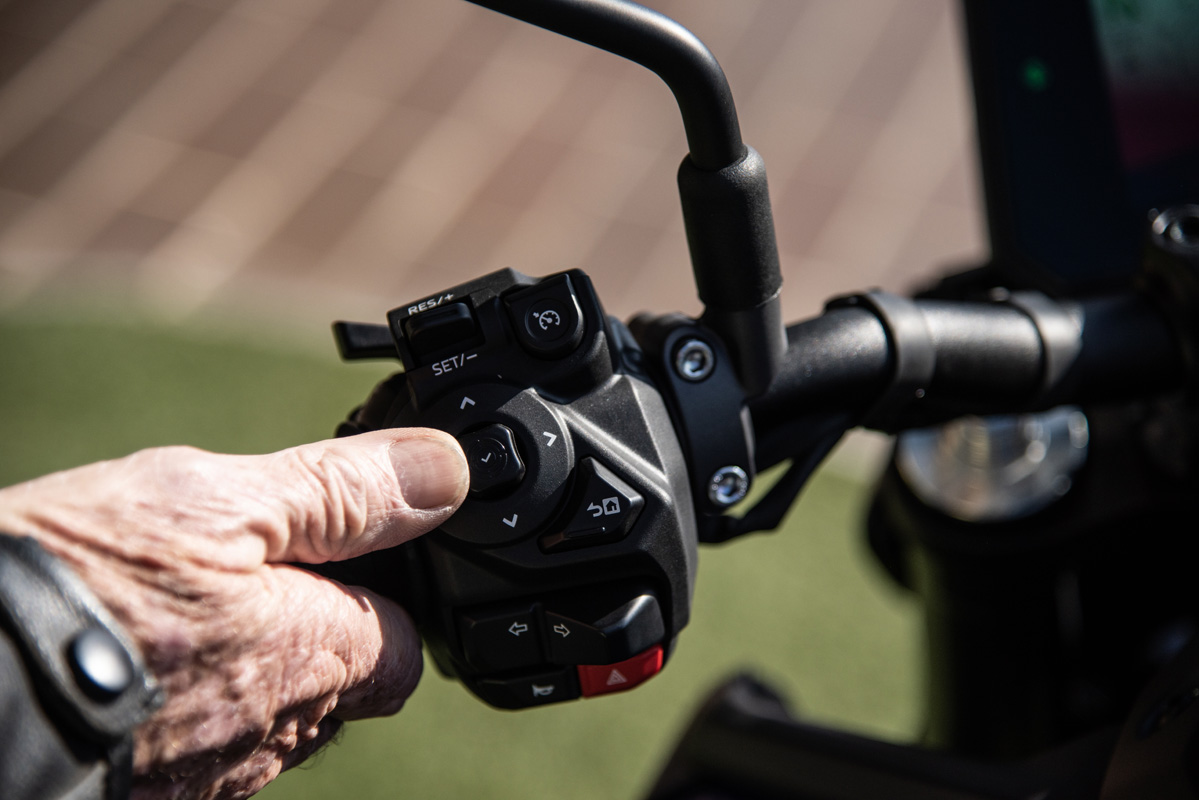
At 196 kg wet, the auto is only 2,8 kg heavier than the manual, so no issues there. The suspension is good, with fully adjustable USD front forks and a preload-adjustable rear shock. The bike feels light and agile and turns effortlessly. The handlebar input is extremely light, and if you are ham-fisted with your input, you can cause some instability. I found myself pinching the tank with my legs so that I could be light and precise with my steering.
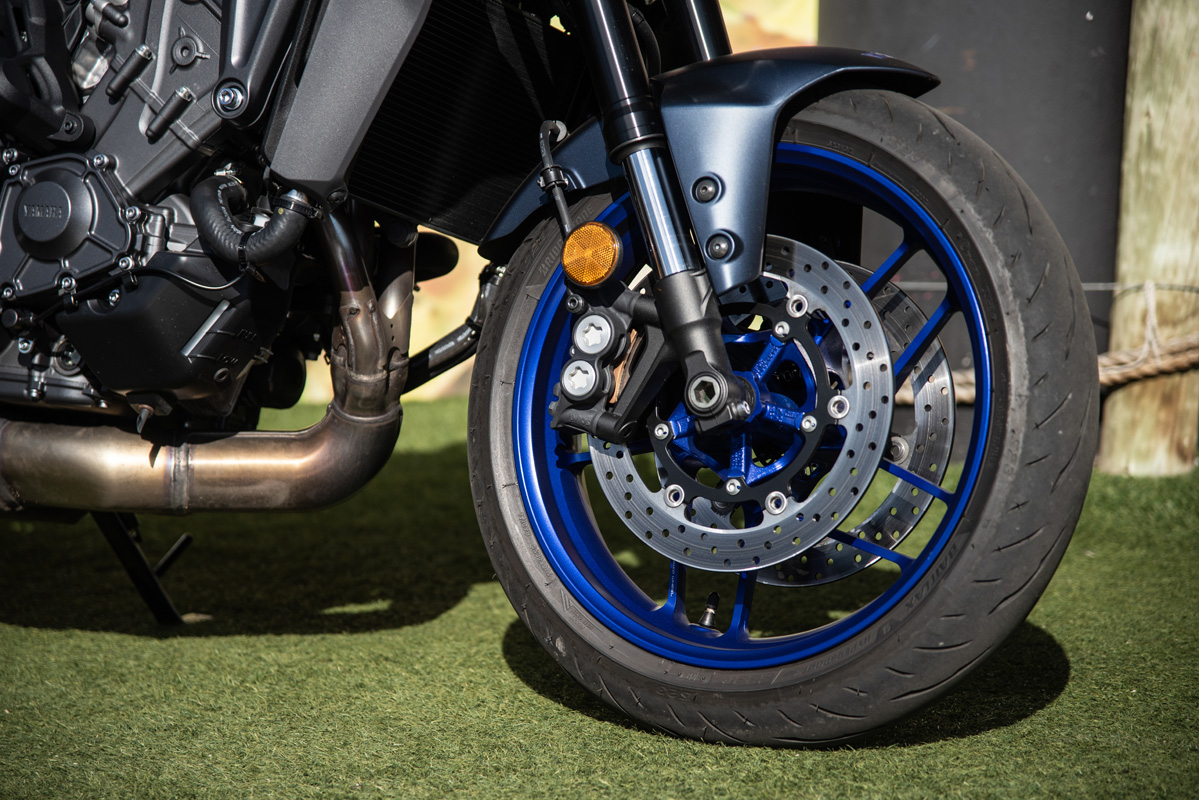
The MT is highly rewarding and engaging to ride, which translates into a great sport riding experience. At 14l, the tank could ideally house another 3 litres to give better range. Yamaha quotes 5L/100 economy, which is easily achieved if you take it easy; however, taking it easy is not what these bikes are about. The aural symphony and gruff rawness of the CP3 motor when throttled is incredibly addictive and not conducive to economic progress.
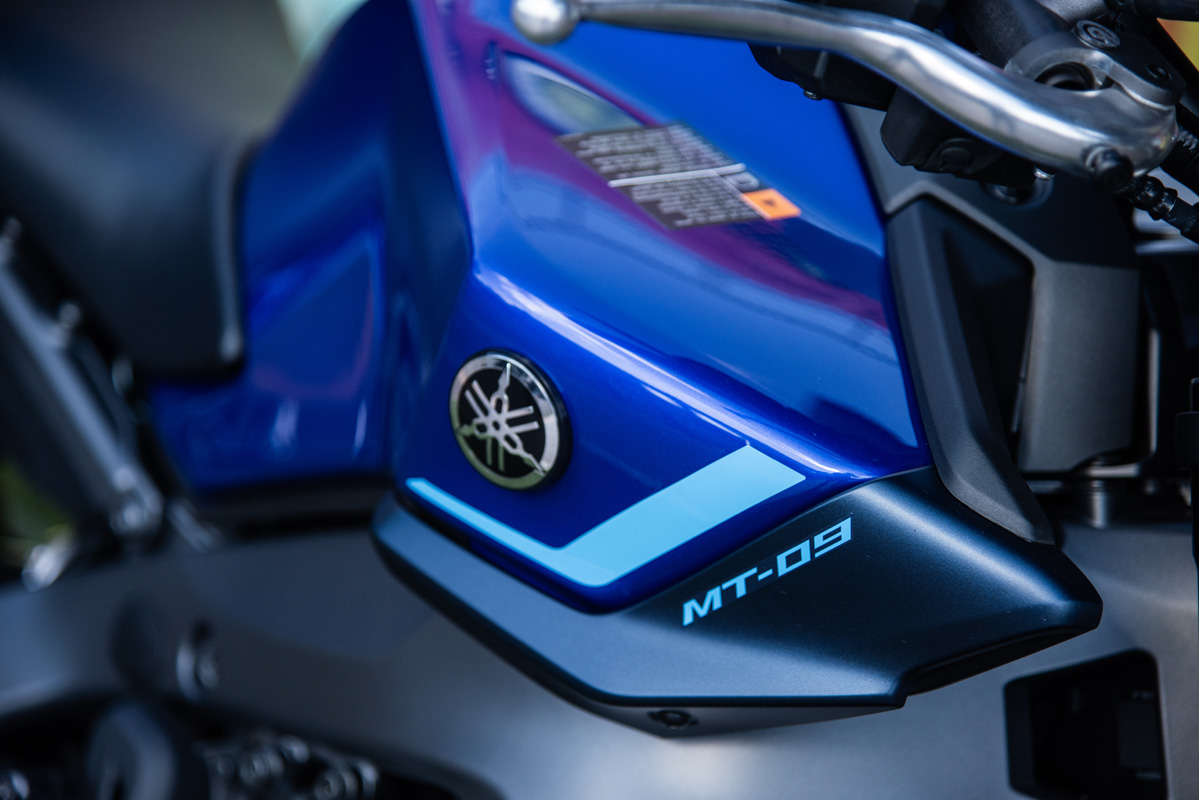
Brakes are Yamaha’s usual in-house callipers, but are mated to a Brembo master cylinder, and they work really well, keeping the 120/70×17 front and 180/55×17 rear wheels on the straight and narrow. Instrumentation is via a 5” TFT display, which accesses the menus to set up the traction control and wheelie control aspects of the bike, as well as provide all the vital info that we are accustomed to. Garmin Streetcross SATNAV is also accessible, as is smartphone connectivity via MyRide. Fuelling is spot on, with none of the on/off switch character of early MT-09s. Cruise control is standard, nice for those solid citizens who would consider touring on their naked.
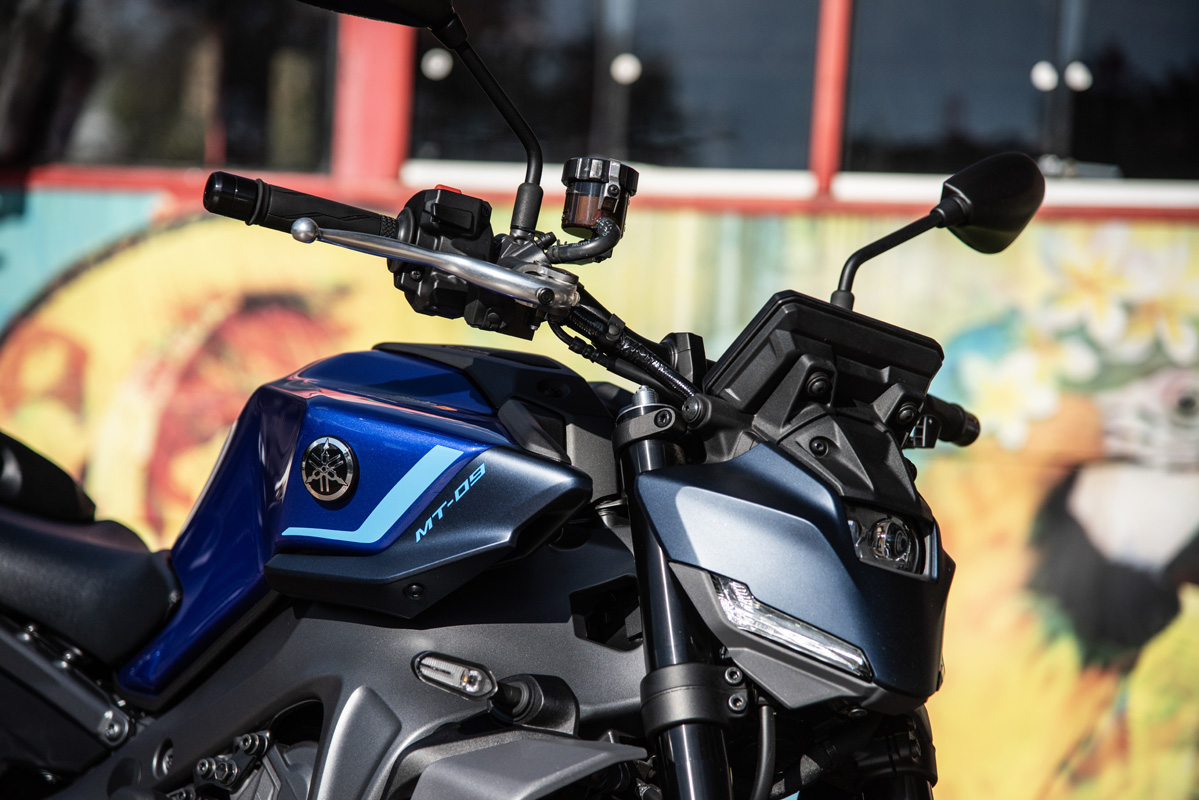
So, all in all, I don’t think that the auto detracts in any way from the riding experience and maybe even introduces some options when in heavy traffic, negating the need to constantly be fanning the clutch. Once you are used to the absence of both clutch and shift lever, and embrace the functionality offered by the various modes, the auto MT is as much fun as any MT ever was.

The question is, has Yamaha answered a question that no one ever asked? A manual quickshifter-equipped MT-09 is wonderfully engaging to ride, and it lives in territory that we are familiar with. You pay a significant premium for the pleasure of the auto, with its R259,950 price tag. A whopping R40,000 premium over the base MT and R20,000 over the SP, which gets you Brembo callipers and higher-shelf suspension from Öhlins and KYB. Ride them both or all three, and you be the judge and decide what floats your boat. Either way, you will get a cracking roadster which will put endless smiles on your dial.
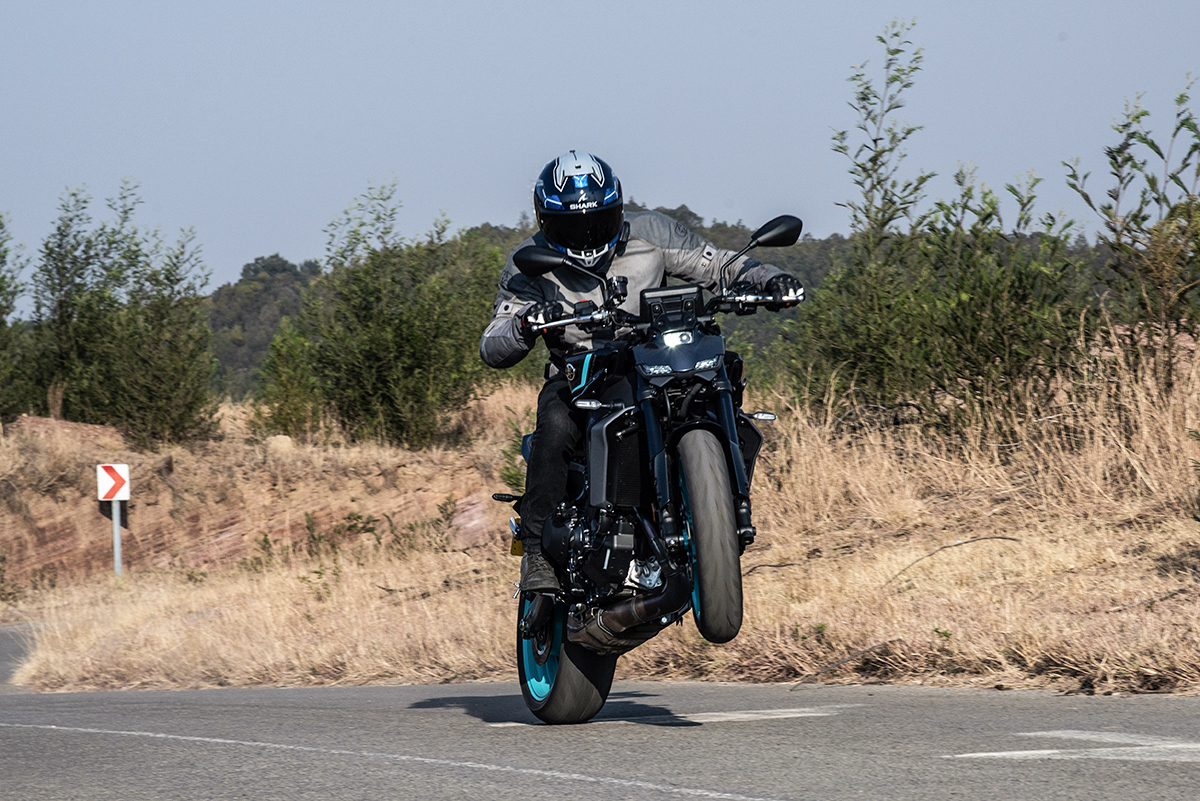
For more information on the bikes featured in this article, click on the links below…






